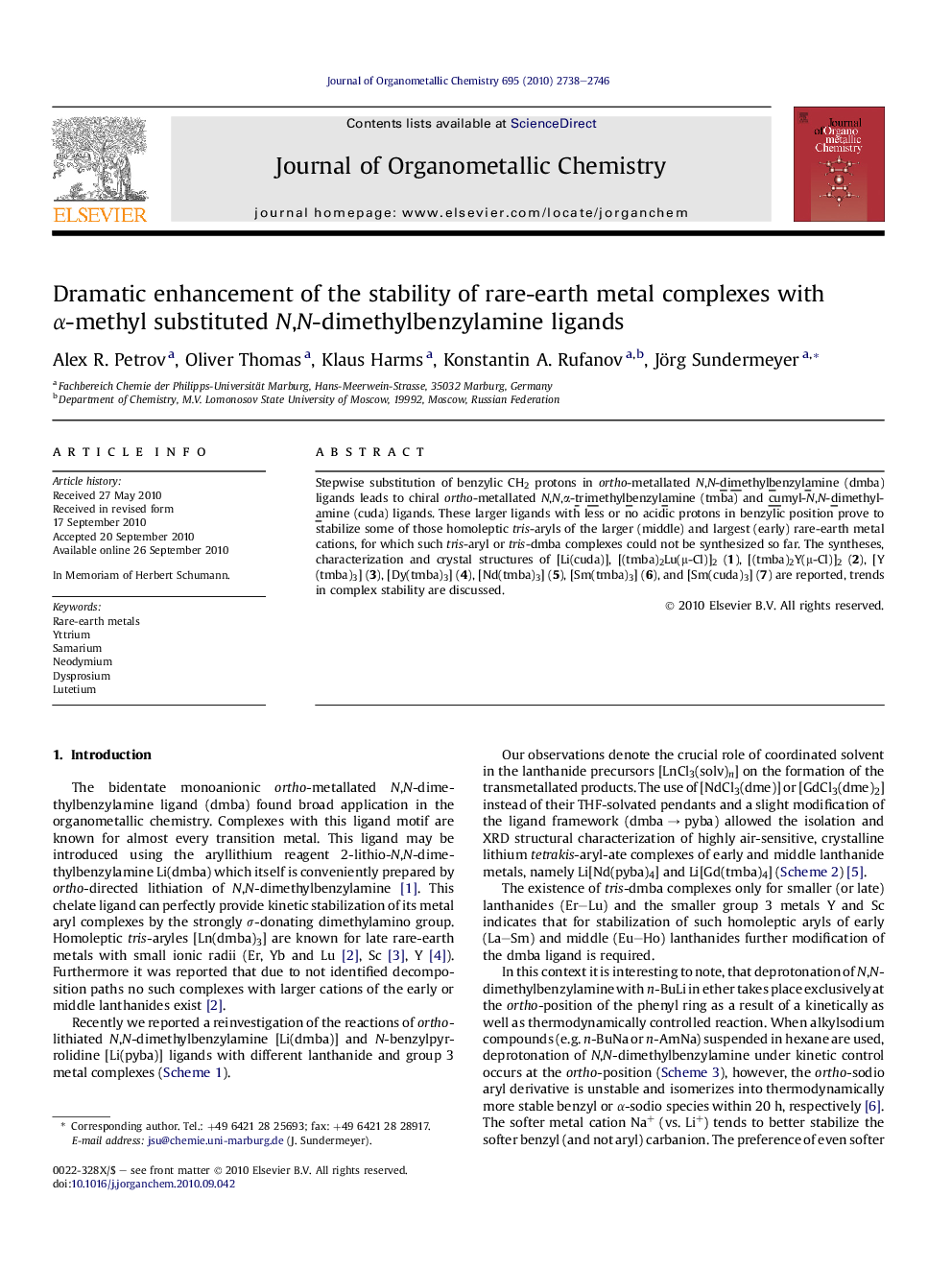| Article ID | Journal | Published Year | Pages | File Type |
|---|---|---|---|---|
| 1325535 | Journal of Organometallic Chemistry | 2010 | 9 Pages |
Stepwise substitution of benzylic CH2 protons in ortho-metallated N,N-dimethylbenzylamine (dmba) ligands leads to chiral ortho-metallated N,N,α-trimethylbenzylamine (tmba) and cumyl-N,N-dimethylamine (cuda) ligands. These larger ligands with less or no acidic protons in benzylic position prove to stabilize some of those homoleptic tris-aryls of the larger (middle) and largest (early) rare-earth metal cations, for which such tris-aryl or tris-dmba complexes could not be synthesized so far. The syntheses, characterization and crystal structures of [Li(cuda)], [(tmba)2Lu(μ-Cl)]2 (1), [(tmba)2Y(μ-Cl)]2 (2), [Y(tmba)3] (3), [Dy(tmba)3] (4), [Nd(tmba)3] (5), [Sm(tmba)3] (6), and [Sm(cuda)3] (7) are reported, trends in complex stability are discussed.
Graphical abstractStabilization of homoleptic tris-aryl rare-earth metal complexes (Y, Sm, Dy, Nd, Lu) was achieved when benzylic CH2 protons in ortho-metallated dimethylbenzylamine (dmba) are substituted by one or two methyl groups (tmba, cuda ligands).Figure optionsDownload full-size imageDownload as PowerPoint slide
